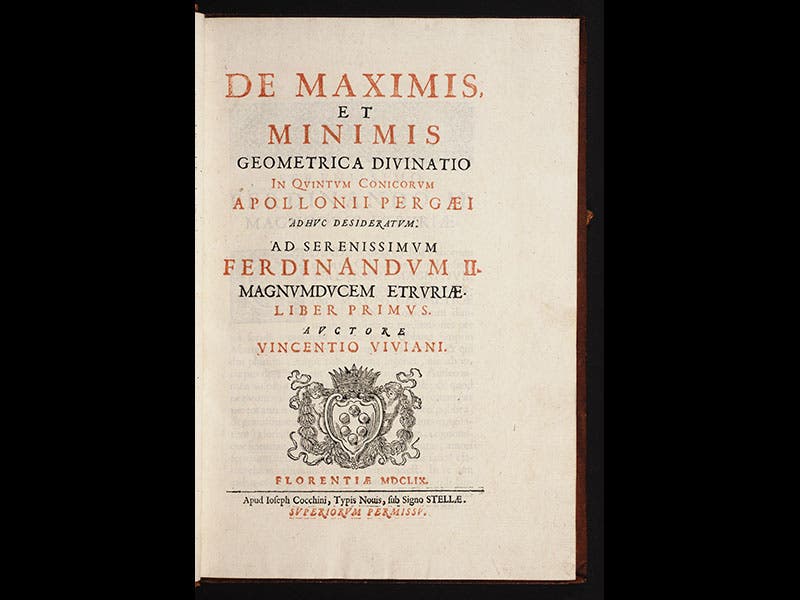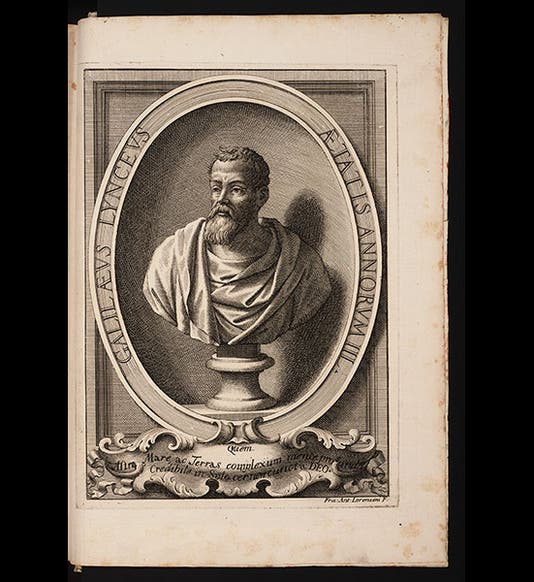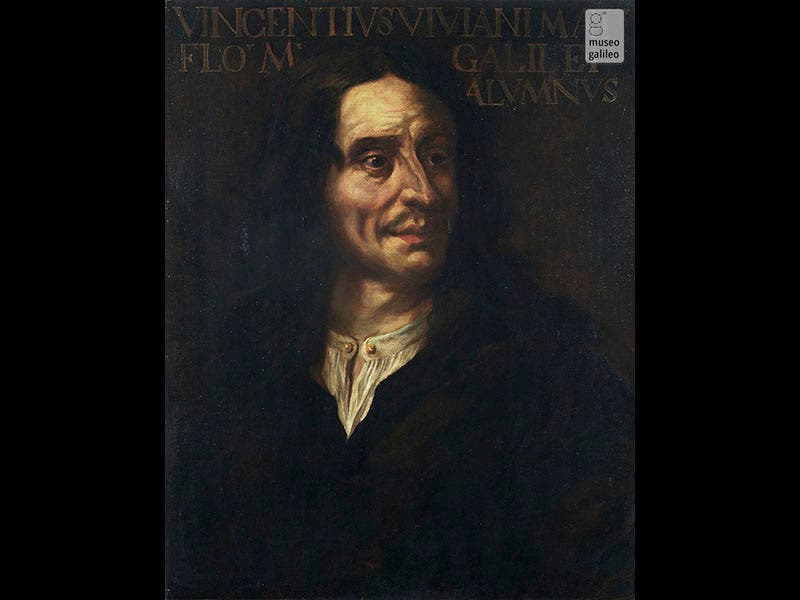Scientist of the Day - Vincenzo Viviani


Vincenzo Viviani, an Italian mathematician, was born Apr. 5, 1622. When just a lad of 16, Viviani greatly impressed Ferdinando II de’ Medici, Grand Duke of Tuscany, with his mathematical talent. In consequence, Viviani received a stipend from the Duke and an introduction to the great Galileo who, blind and aging, was living out his remaining years at his villa at Arcetri, just outside of Florence. Galileo invited Viviani into his household in 1639, and there Viviani’s real education began. He had only three years with Galileo before Galileo’s death in 1642, but those years provided a direction for the rest of Viviani’s life. Although Viviani was an impressive mathematician on his own and produced important editions of the works of ancient mathematicians such as Euclid and Apollonius (second image), the driving force in Viviani’s life became preserving the manuscripts and papers of Galileo for later publication. By 1654, Viviani had put together material for an edition of Galileo’s works, and he wrote a biography of his hero for inclusion in this projected Opere. But nothing came of the project; the Opere that was published in 1656 was not Viviani’s, but the work of another editor, and Viviani’s biography of Galileo was not included. Viviani’s Vita di Galileo was not published until after his death, in 1717, in a book that otherwise had nothing to do with Galileo.
Viviani’s biography of Galileo is a very important treatise, because it is the only life of Galileo written by a contemporary. And it contains two famous stories: one says that Galileo discovered the law of pendulums by observing the swinging chandeliers in the Pisa Cathedral; the other maintains that Galileo demonstrated the fallacy of Aristotle’s laws of falling bodies by dropping weights from the top of the Tower of Pisa. Both stories became part of Galileo lore and are still often repeated. Neither story, alas, appears to be true, which is surprising, since Viviani was by all accounts an able and honest editor. We don’t know whether he was passing along stories that Galileo told him, or stories relayed by Galilean protégés such as Evangelista Torricelli. It is highly unlikely that Viviani just made them up, but the truth is, they have no substance in fact.
We have long sought a copy of the 1717 work in which Viviani’s biography of Galileo first appeared, and it appears we have now found one and will soon be adding it to our collection. There is an oil portrait of Viviani in the Museo Galileo in Florence (third image). Interestingly, the posthumous edition of Viviani’s De locis solidis (1701) has an engraved portrait, not of Viviani, but of Galileo (first image).
Dr. William B. Ashworth, Jr., Consultant for the History of Science, Linda Hall Library and Associate Professor, Department of History, University of Missouri-Kansas City. Comments or corrections are welcome; please direct to ashworthw@umkc.edu.







